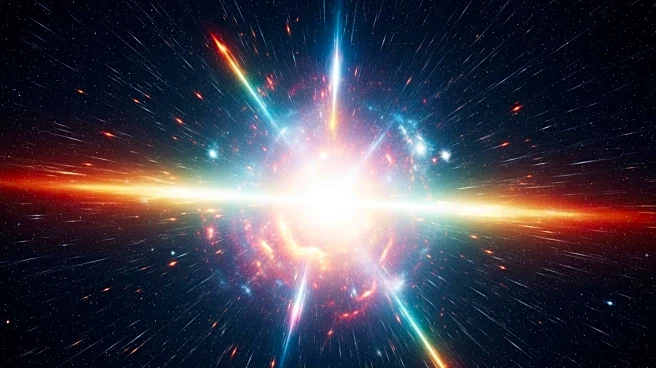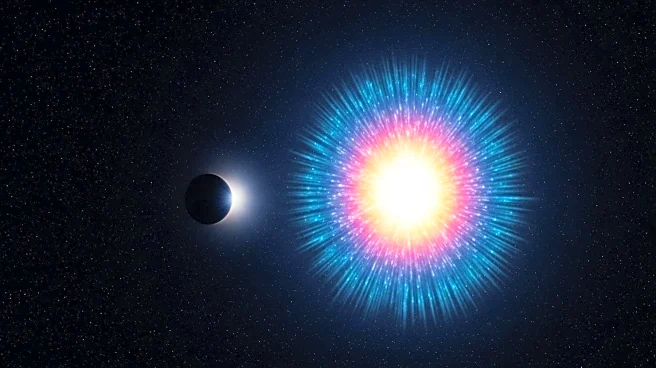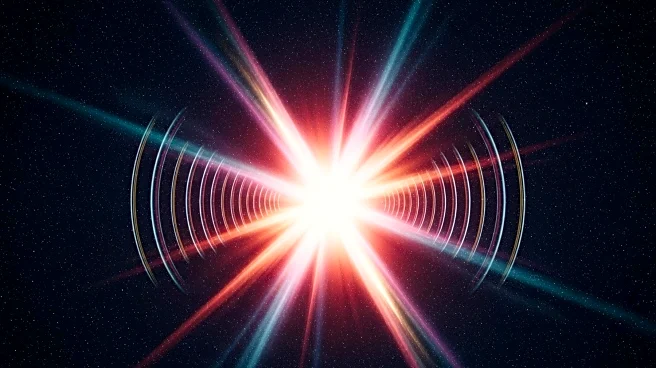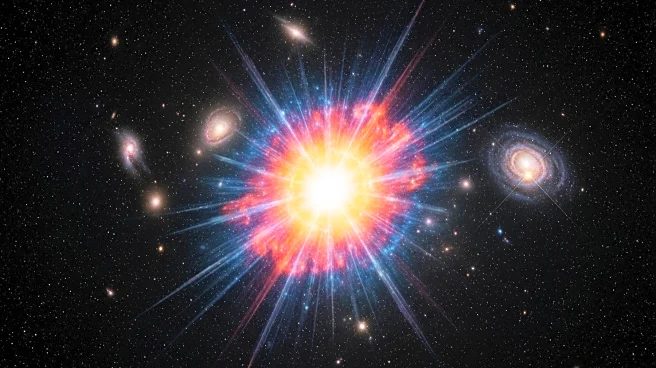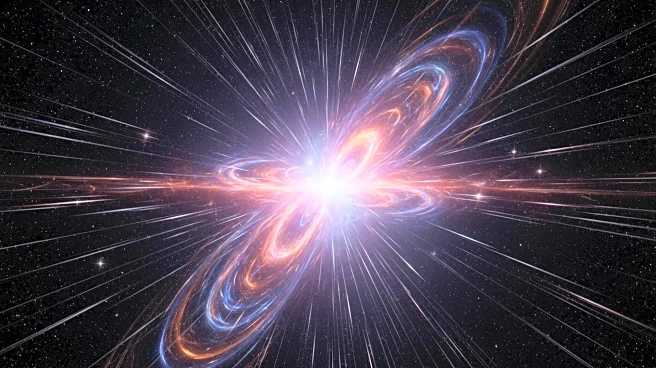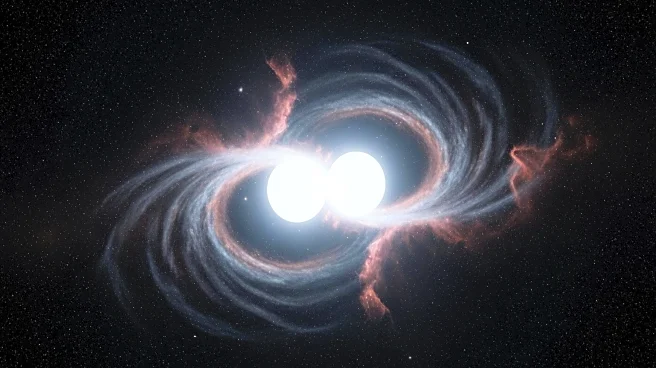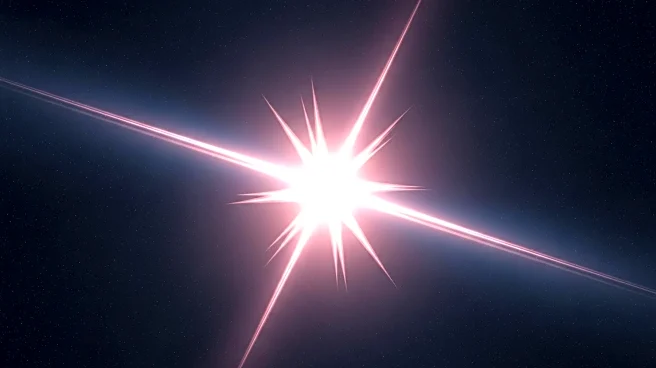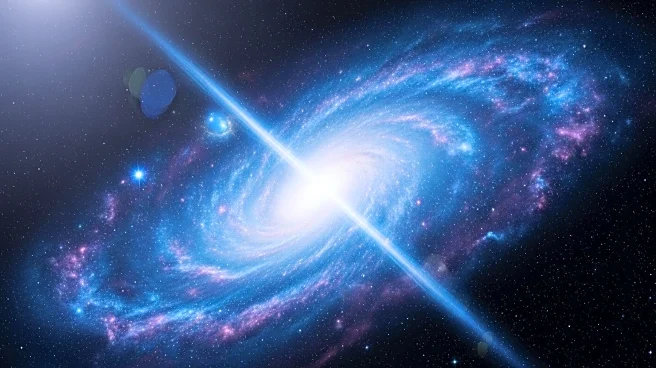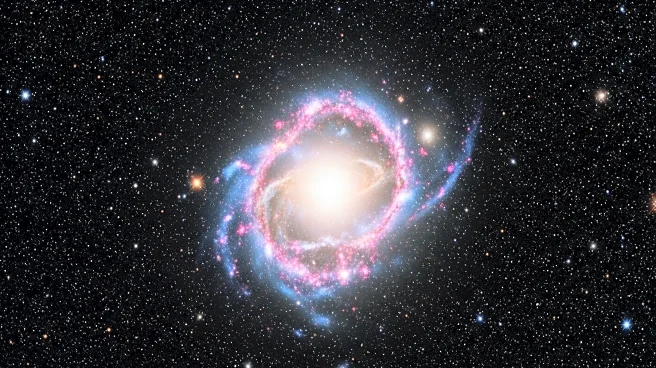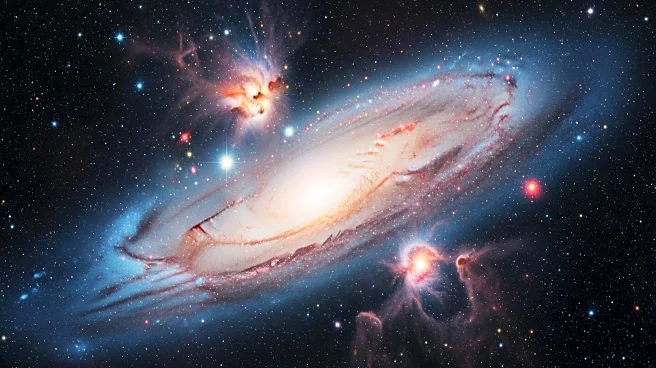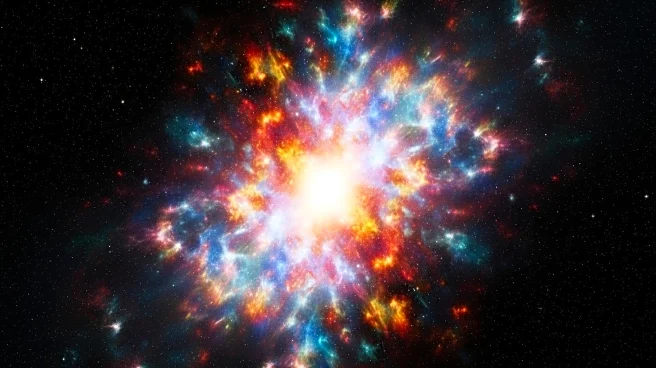What's Happening?
Astronomers have observed a gamma ray burst (GRB) that defies conventional understanding, as it repeated multiple times over a single day. Typically, GRBs are catastrophic events resulting from a star's supernova, which should obliterate the star in a single explosion. However, this new GRB, designated GRB 250702B, was detected by NASA's Fermi Gamma-ray Space Telescope and exhibited three distinct bursts. The event was also recorded by the Einstein Probe, an x-ray telescope, indicating the activity began almost a day earlier. The GRB's periodic nature and its occurrence outside the Milky Way, potentially billions of light years away, make it an extraordinary discovery. Scientists are exploring various theories, including the possibility of a massive star imploding or a tidal disruption event involving a black hole, but none fully explain the phenomenon.
Why It's Important?
The discovery of GRB 250702B challenges existing astrophysical models and could significantly impact our understanding of stellar deaths and gamma ray bursts. If the GRB is linked to a massive star or a tidal disruption event, it may provide insights into the behavior of intermediate-mass black holes, which have not been directly observed. This could fill a 'mass gap' in black hole research, offering new perspectives on the formation and evolution of black holes. The event's extragalactic origin also suggests it is more powerful than typical GRBs, potentially altering our comprehension of energy release in the universe. The findings could lead to advancements in astrophysics and influence future research directions.
What's Next?
Astronomers will continue to analyze data from GRB 250702B to refine their understanding of the event. Further observations using advanced telescopes and instruments may help identify the exact nature of the explosion and its source. The scientific community is likely to explore new theoretical models to accommodate such unprecedented phenomena. Additionally, the search for intermediate-mass black holes may intensify, as this event could provide indirect evidence of their existence. Collaborative efforts among international observatories and research institutions will be crucial in unraveling the mysteries surrounding this unique GRB.
Beyond the Headlines
The detection of GRB 250702B raises questions about the limits of current astrophysical theories and the potential for unknown cosmic processes. It highlights the need for continuous innovation in observational technology and theoretical frameworks. The event also underscores the importance of international collaboration in space research, as multiple observatories contributed to its discovery and analysis. This case may inspire a reevaluation of how scientists approach unexplained cosmic phenomena, encouraging openness to novel hypotheses and interdisciplinary research.
